The Synergy Between AI and Note-Taking in 2024: A Closer Look
It’s time to burn your pencils and shred your notebooks because AI note-taking is taking over. Ok, we may be getting ahead of ourselves — jotting things down is...
It’s time to burn your pencils and shred your notebooks because AI note-taking is taking over. Ok, we may be getting ahead of ourselves — jotting things down is still a thing (and it will be in the predictable future). But sometimes pen & paper doesn’t cut it. So, what exactly is AI note-taking, and how does it work? Here’s everything you need to know.
💡 Before we dive in... This is the second part of our AI series. Be sure to check our previous article What Is OpenAI to learn more about key moments in the history of artificial intelligence.
🤖 + 📝 What Is AI Note-Taking?
“Taking notes with pen & paper is faster and more convenient than typing on a keyboard,” said no one ever. As much as we’d like to glorify the cognitive benefits of handwritten notes ✍️ (there are quite a few), taking digital notes is just so much faster and more efficient.
But the dawn of the new generation of AI writing tools led by ChatGPT has shown that there’s still room for improvement. Speaking of which, here are examples of ChatGPT prompts you can use to get the best out of your AI experience.
So, what exactly is AI note-taking?
In a nutshell, AI note-taking is the use of machine learning algorithms and natural language processing techniques to streamline the note-taking process.
As with any other domain subject to automation, the overarching goal of AI-aided note-taking is to automate the “mundane.” That can include:
🌳 Generating outlines or templates to streamline the note-taking process.
🔎 Extracting key information (keywords, concepts) from long-form content.
🎧 Transcribing lectures or meetings into easily-digestible notes.
🧱 Capturing and integrating large sets of data from multiple sources.
⚡️ Suggesting personalized work insights to boost productivity.
And much more.
But the debate if we should shed the responsibility for taking notes to AI or integrate it into existing workflows is still in the air. And that brings us to another important question.
🥊 Automate or Augment?
When it comes to AI in note-taking, there are two main schools of thought.
The first in which AI is yet another tool in the creative toolbox 🧰 seems much more natural, at least from the evolutionary perspective. AI tools can help users structure written material, clarify difficult concepts, or develop existing ideas to create a more complete picture of a topic.
This is what we call “augmented note-taking.”
You can think of this approach as a musical duet, where the musician uses AI as a supportive accompanist. The musician’s creativity and personal touch remain at the forefront, but the accompanist adds depth and texture to the music.
Of course, it’s also possible to outsource note-taking 🤖. Artificial intelligence can capture, transcribe, and flesh out notes from a meeting or lecture without human oversight. This is more like having an AI-powered band that plays all instruments and conducts itself.
Both of those strategies have their place in a knowledge-driven economy. But at the end of the day, the one you choose will largely depend on your personal use case.
⚙️ What Are Some Practical Applications of AI Note-Taking Tools?
Research and Brainstorming
The potential role of artificial intelligence starts long before you put pen to paper (or fingers to keyboard). Well, it starts even before you enter a classroom or join a meeting.
AI writing tools are excellent at supporting hierarchical note-taking. They can generate a spanning outline for an upcoming lecture or draft a meeting agenda to keep things on track.
With a structure in place, all you need to do next is fill in the blanks.
Of course, AI’s usefulness extends beyond that. For instance, you can start learning about a topic in advance and gather supplementary materials that can come in handy later on.
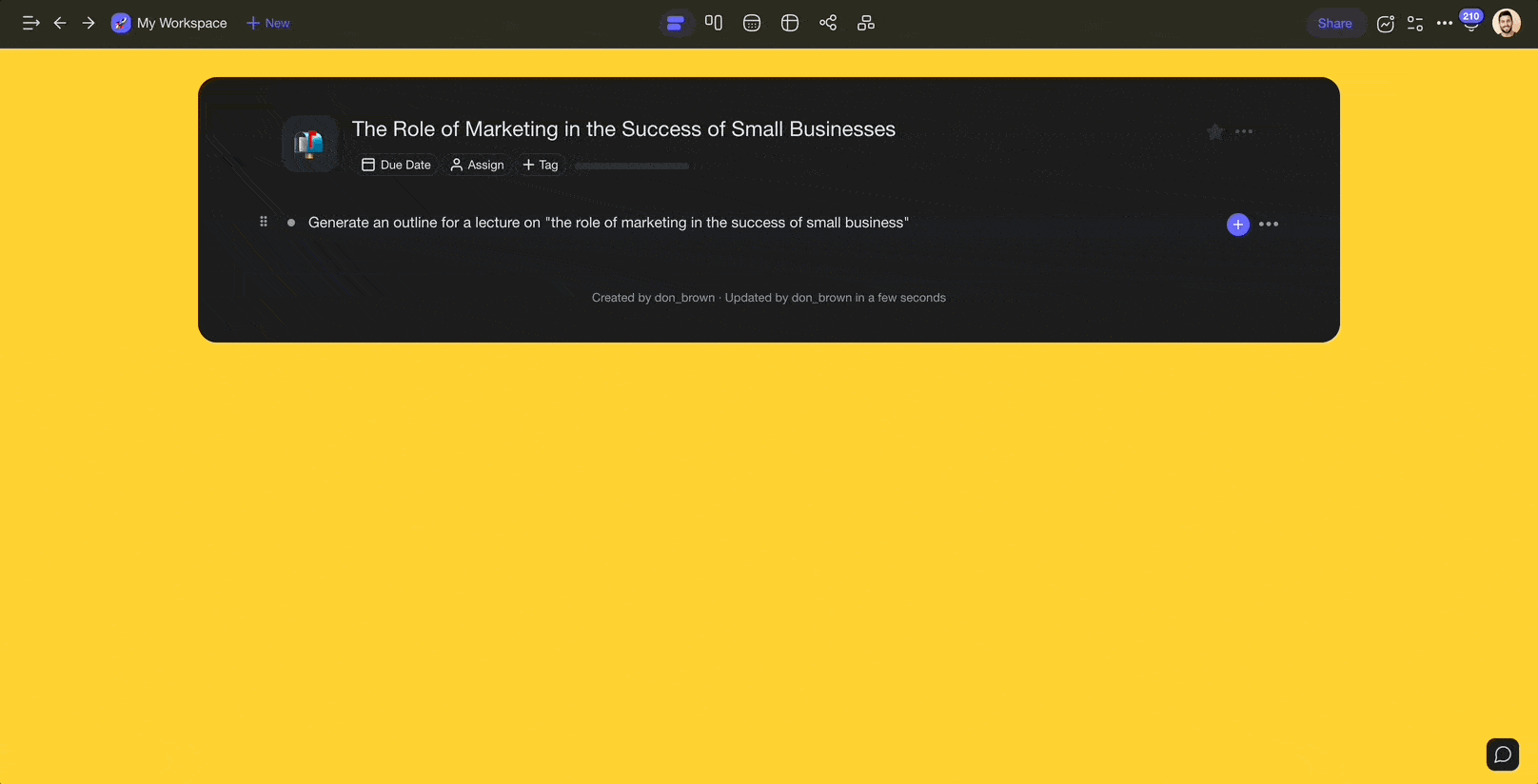
Taskade's AI Assistant will help dive deep into any topic. All you need to do is describe what you're working on and use one of the AI /commands to get started.
AI-based search engines like Bing and Perplexity are already bundling search queries with high-level footnotes that vastly improve the note-taking process. While some answers are still subject to inaccuracies or biases, the speed and context comprehension are eerily remarkable.
Voice Recognition and Transcription
Picture this. It’s 9 a.m. — you stumble into a meeting, bleary-eyed and caffeine-deprived, trying your best to keep your attention from wandering. You’re ready to drag yourself through the meeting (as you’ve done in the past). But this time, you have to take notes.
While note-taking can be fun, for most of us, it’s just a chore.
The good news is AI engineers seem to have it all figured out.
Some automated note-taking tools can transcribe a meeting or a lecture in real-time and produce bite-sized (pun definitely intended) summaries the moment you drop off a call.
But it gets even better.
Let’s say you’re a journalist prepping for the most important interview of your life. You’re radiating with enthusiasm, kickstart the discussion, and everything seems to go well…
…until you realize your recorder’s battery is dead, or, if you still rock a traditional pen & paper combo, you haven’t jotted down a few important details. Cue the panic sweats.
AI meeting transcripts reduce the risk of missing important details and eliminates the need for extreme redundancy (like carrying four voice recorders), at least to some extent.
Summarizing Notes
You’re a note-taking ninja, with lightning-fast reflexes and a pen that moves like a blur. You’re like a cheetah on the savannah, chasing down every detail with speed and grace. Buuut… you still need to put in the time and effort to process your notes so you can actually use them.
And this is where language models like the GPT-4 powering ChatGPT shine.
AI note-taking tools can instantly summarize lengthy documents, meeting notes, or a 3-hour-long lecture. Just so they don’t look like a 400-page manual that came with your car.
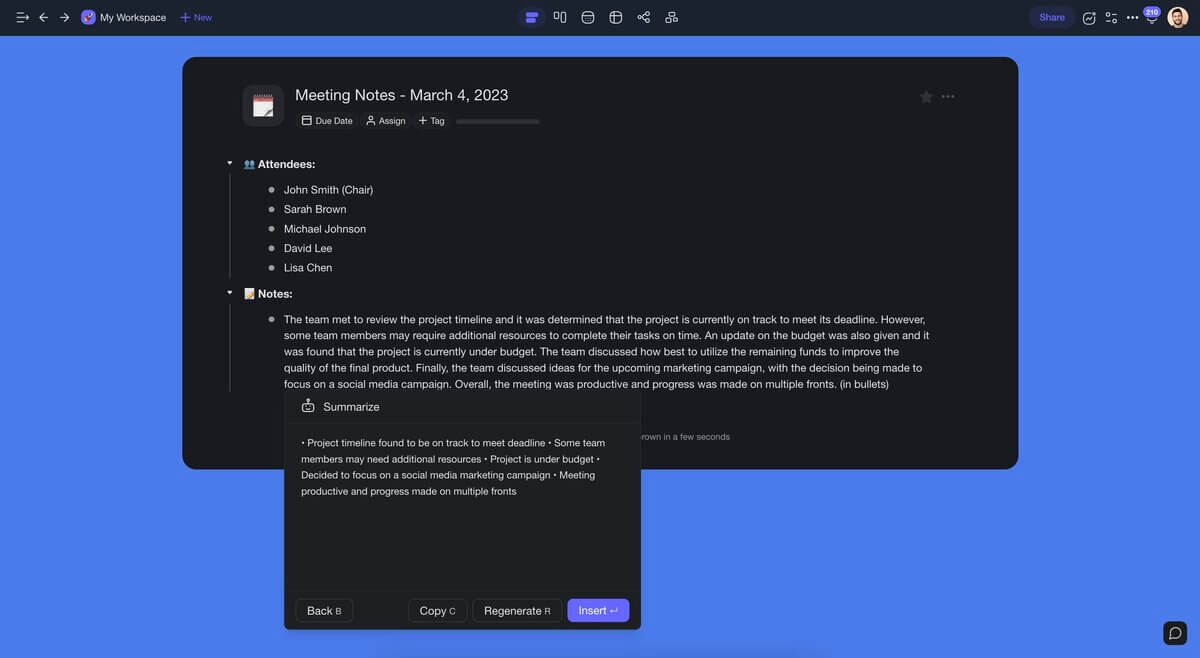
Taskade AI features a /summarize command that turns long-form content into bite-sized notes. You can also upload your files and documents, and the AI Summarizer will extract key insights for you.
Let’s take this a step further.
You know that old saying about not being able to see the forest for the trees?
AI can be trained to recognize patterns in data and identify potential connections between facts and bring your attention to details that are too fine to spot. Every piece of information can be instantly categorized and linked to other relevant bits of knowledge already in the system.
Integrating Knowledge
Formulating medical diagnoses is a highly integrative process. Patient’s medical history, symptoms, physical examination, lab tests — each piece of information is like a puzzle piece that needs to be fitted together to create a complete picture.
If you’re an experienced medical professional with years of experience, you may just hit the jackpot. But if you’re missing even one 🧩 piece, the picture won’t be clear.
In the early 2000s, IBM developed a cognitive computing system called “Watson” to help fill in those gaps by analyzing large volumes of unstructured data and providing holistic insights.
On a micro-scale, AI-based note-taking tools serve a similar purpose. They can categorize and organize content automatically, fleshing out the connections to create context.
Want to know how Taskade keeps that organized knowledge at your agents’ fingertips? Read our guide to AI agent memory for a clear breakdown of short-term and long-term recall.
At some point in the future, artificial intelligence may be able to identify gaps in your knowledge and suggest supplementary materials to fill them.
Team Collaboration
Nobody likes team meetings. Ok, let us take that back. Nobody likes dragging team meetings when you need to balance taking notes with paying attention to what others are saying.
Automated note-taking can streamline team collaboration in two ways.
First, they can automatically capture and transcribe the meeting notes (we’ve already covered that). Second, they let teams co-write and edit content to make the most of the meeting.
Sounds too good to be true? In Taskade, the team can write and edit meeting notes with the help of AI. All this happens during the meeting, in the same project, at the same time.
And here’s the best part. You can use Taskade’s Generate Action Items bulk command to create a list of meeting action items based on long-form notes you take during the meetings.
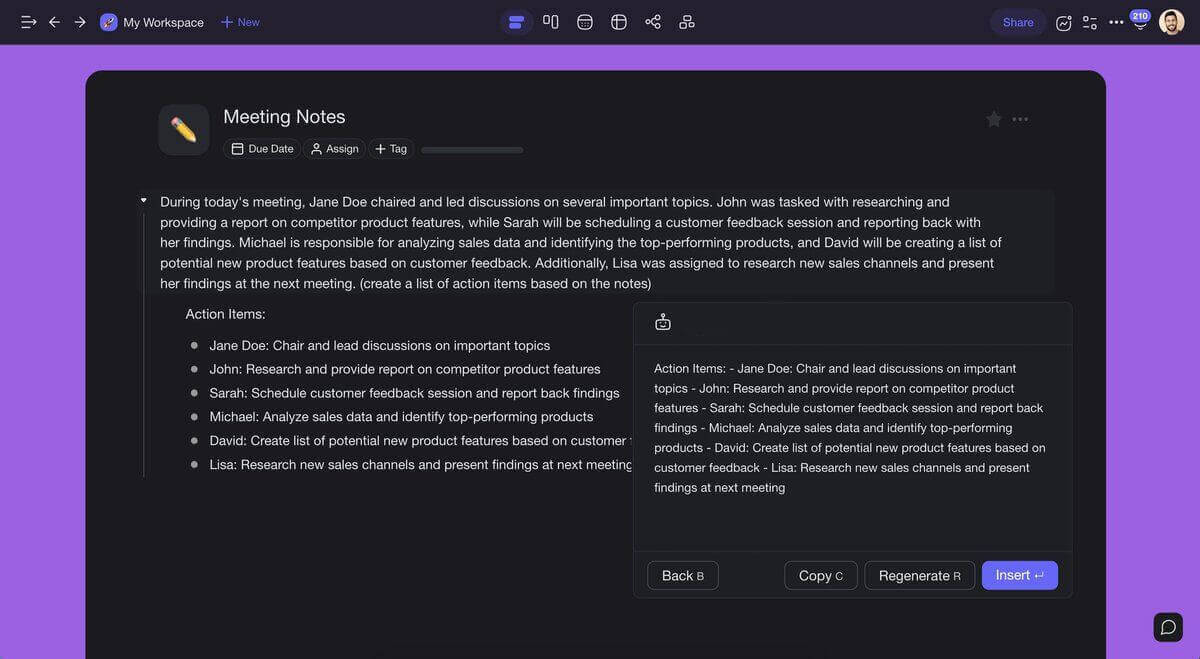
Taskade's Bulk Commands allow you to use the power AI on multiple paragraphs or tasks. Research multiple topics, rewrite long documents, or fix spelling and grammar in bulk.
Learning and Education
Does AI have a place in education? Well, that depends on who you ask.
Since the launch of ChatGPT, the academic world has been increasingly worried about the over-reliance of students on AI-based writing tools. Some academics argue that AI can potentially hinder the development of critical thinking and creativity.
But like any other tool, artificial intelligence is just a tool. 🔨
If you’re a college student, you can use an AI-powered note-taking app (wink, wink Taskade) to structure and take smarter, more effective notes during lectures and study sessions. You can then expand on each topic and find out more about key concepts without relying on the Big G.
Of course, artificial intelligence can do much more than that.
If you’re learning a language, you can quickly translate your notes into different languages. And once you’re done writing your paper, you can get AI to proofread it in seconds.
👋 Parting Words
After thousands of years of years of hand-writing documents, jotting down ideas, and recording important events using pen & paper, we're getting ready to shed that responsibility to artificial intelligence. And while we're not there yet, full automation of this domain is a matter of time.
Let's recap what we learned today:
🤖 AI tools can act as a fully-fledged meeting assistants or study buddies.
🎧 Students, academics, and businesses can use AI for accurate transcriptions.
⚡️ Language models can grab and extract insights faster than during manual note-taking.
The emergence of AI tools represents a significant step forward in the way we capture and process information. While pen & paper may still hold a special place in our hearts, it's hard to deny the benefits that AI-powered tools offer in terms of speed, accuracy, and efficiency.
🚀 So, are you ready to embrace that future of note-taking?
Create a free Taskade AI account today!
⚡️ Work faster: Generate summaries of your notes and extract valuable insights from any project or document, so you can focus on getting things done.
✍️ Write smarter: Type anything with an AI Assistant at your fingertips. Taskade AI streamlines your writing workflow and provides real-time suggestions.
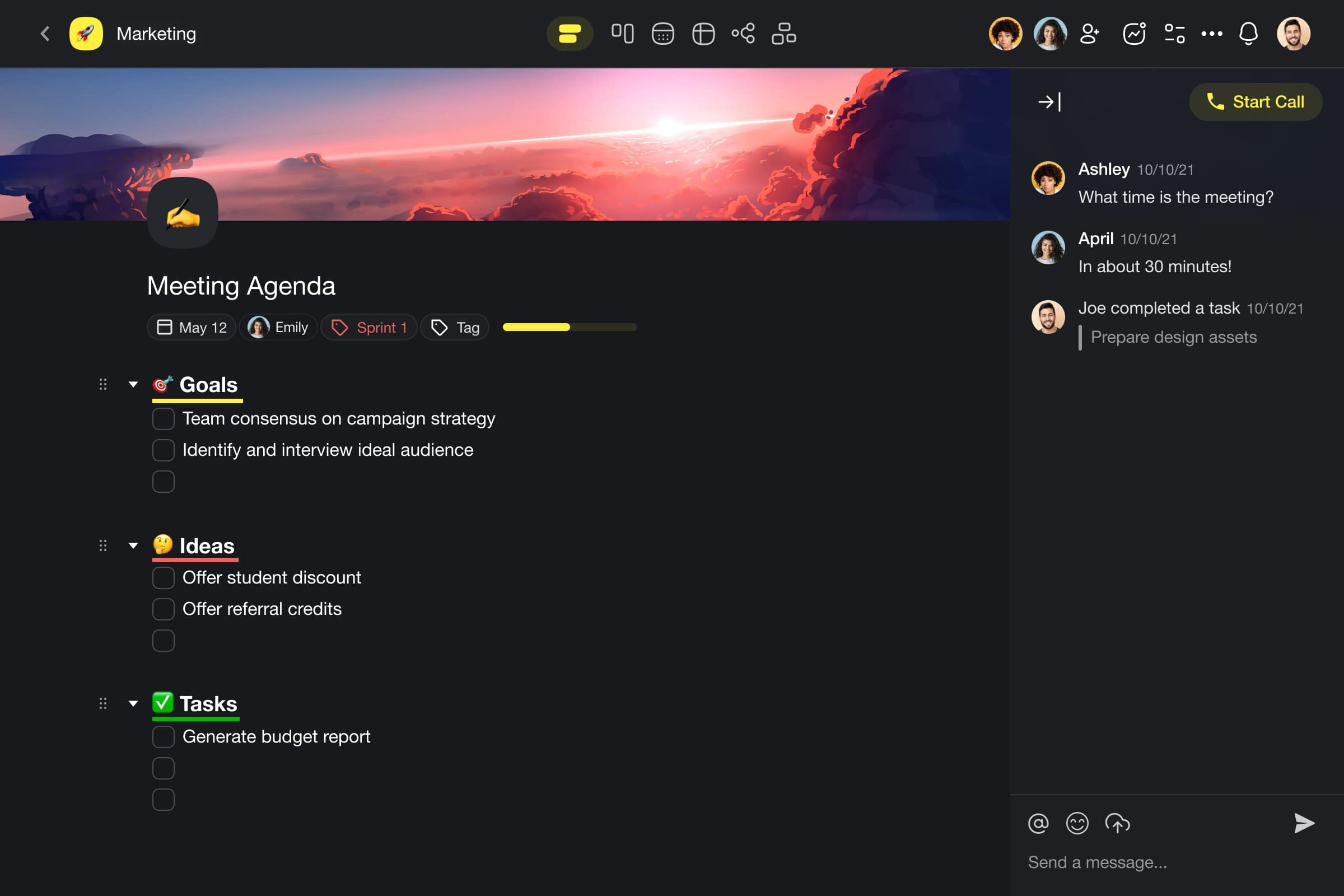
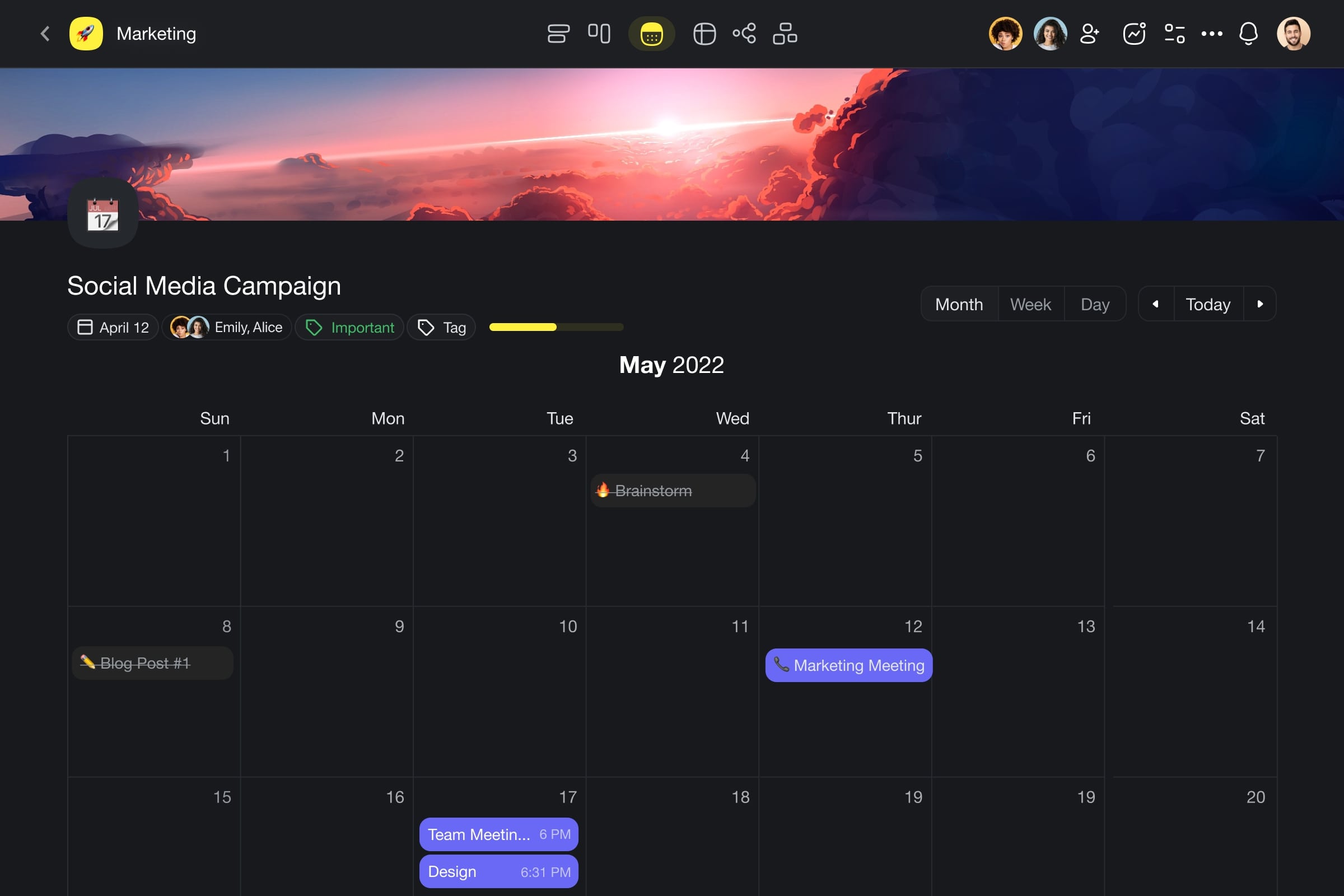
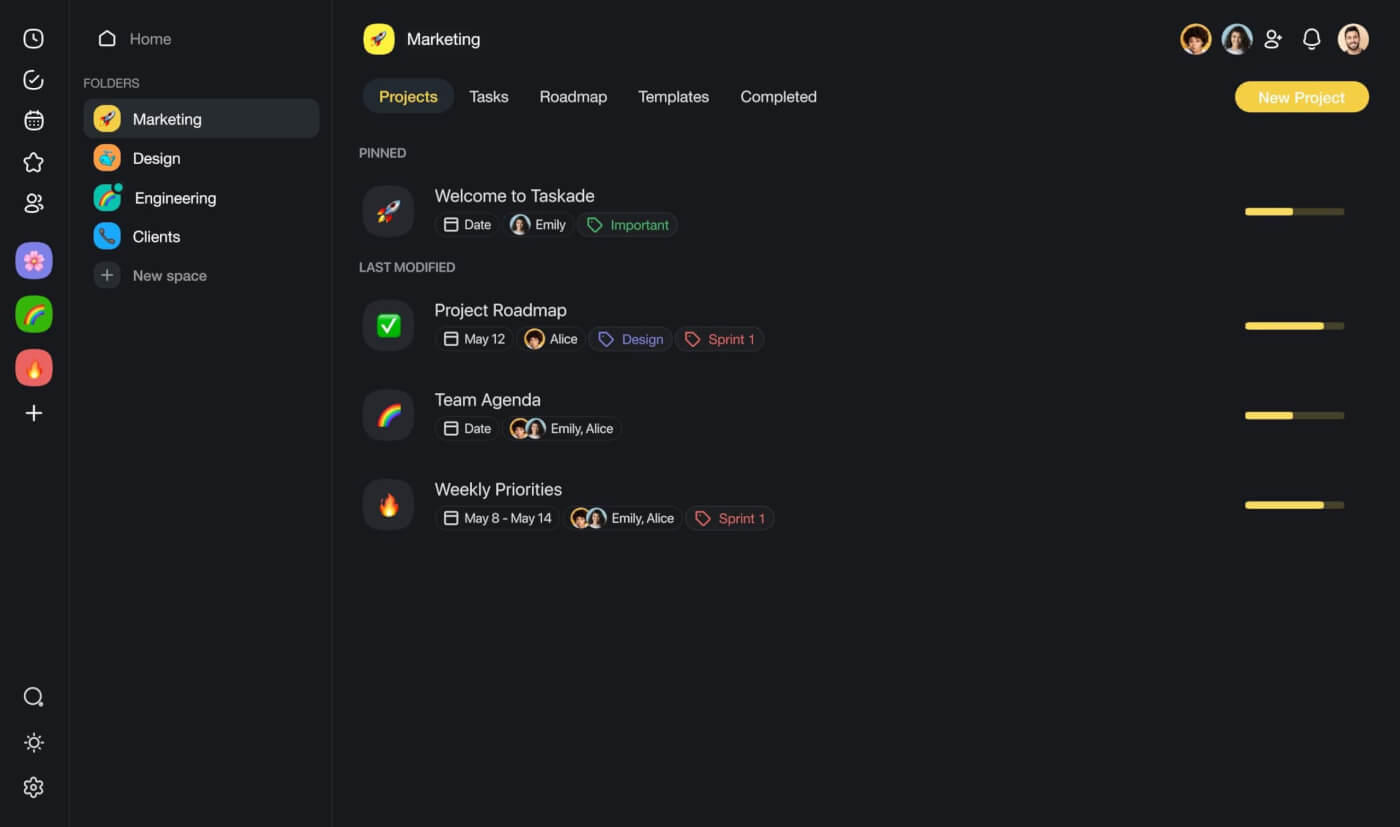
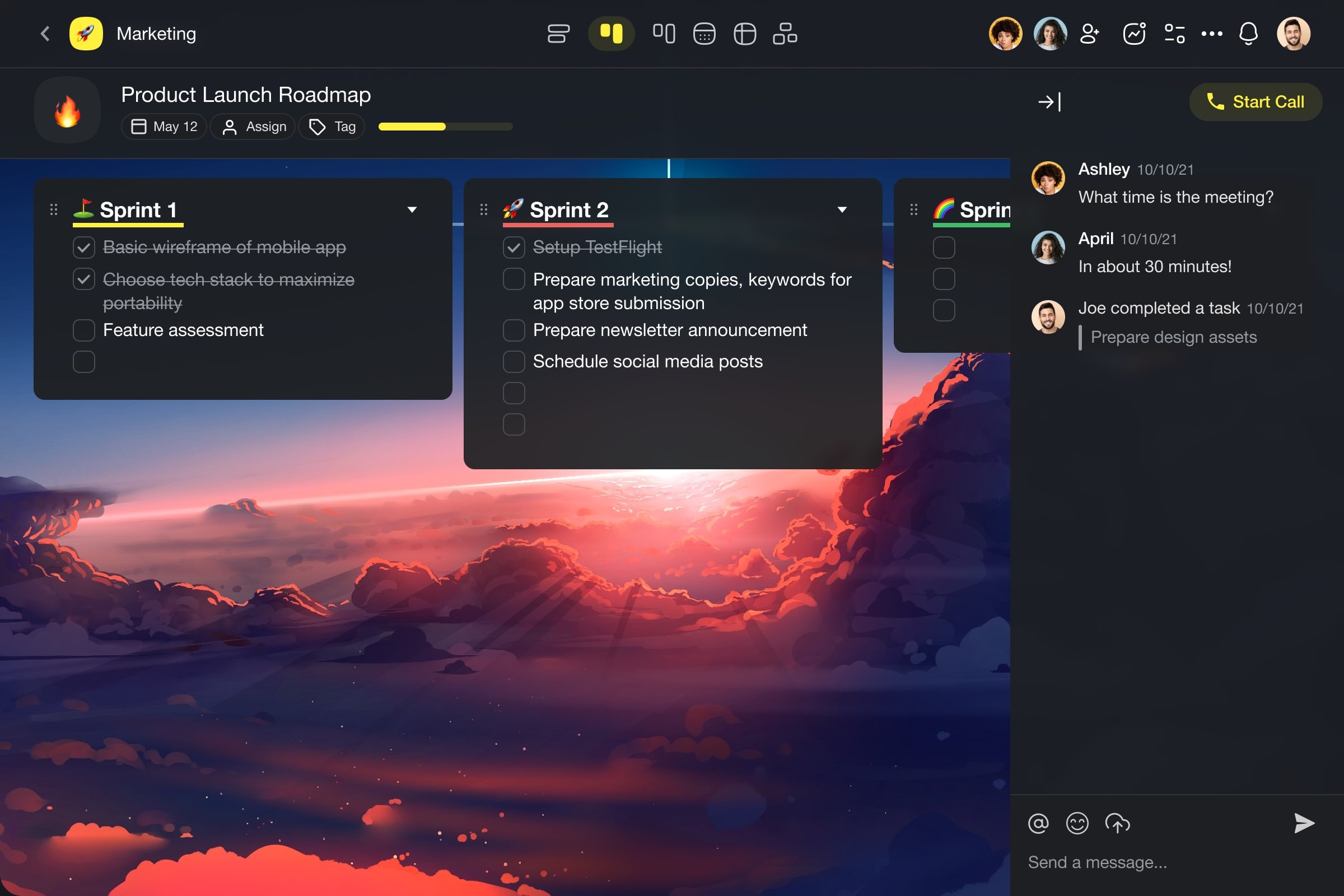
🧠 Think bigger: Generate ideas and create instant outlines for your notes in different workflows — kanban, mind maps, and more. Taskade AI makes brainstorming a breeze.
✍️ Collaborate in real-time: Work together in real-time, share your notes, and get everyone on the same page (AI Chat and video calls included).
✅ Get more done: Taskade AI will streamline your note-taking workflow and make your day-to-day work life easier. Just so you don't have to face the creative block again.
🤖 Automate with Custom AI Agents: Create, train, and deploy teams of AI agents to automate tasks so you can focus on the work that really matters.
💡 Before you go...Enjoyed the article? Find out why you should start building a second brain and check our list of best AI writers next. See you soon!
Frequently Asked Questions (FAQ) about AI Note-Taking
Is there an AI that takes notes for you?
Yes, there are several AI-powered note-taking apps available that can take notes for you, the most popular being Apple Notes and Google Keep which are deeply integrated into existing tech ecosystems. These apps use advanced natural language processing (NLP) technology to understand and transcribe your spoken words into notes.
What are AI notes?
AI notes are digital notes that are created, edited, and organized with the help of an artificial intelligence (AI) system. These notes can be generated from a variety of sources, including audio recordings, text documents, and web pages. AI notes can also help you identify patterns and insights that might not be immediately obvious.
Which is an AI-powered collaborative note-taking app?
Taskade is a popular AI-powered collaborative note-taking app that offers a range of features designed to improve collaboration and productivity. The app uses AI technology to help organize notes, assign tasks, and set deadlines, making it a useful tool for remote teams. With Taskade, you can easily create and share notes with your team, and you can also collaborate in real-time to get things done more efficiently.
Can an AI write a paper?
Yes, AI technology has advanced to the point where it can generate written content, including research papers. However, the quality of the content produced by an AI may not always match that of a human and still requires oversight. That said, AI-powered writing tools are still an excellent resource for generating ideas and structuring writing.
Is there a free AI writer?
Yes, there are several free AI writing tools available online that can help you generate content quickly and easily. And Taskade is one of the best you can get today! With Taskade, you can create outlines, brainstorm ideas, and generate entire documents in seconds. All you need are a few natural-language prompts to get started.
Which app is best for AI digital note-taking?
There are many great AI-powered digital note-taking apps available, each with a unique set of features and capabilities. Popular options include Taskade, Google Keep, and OneNote, all of which work across multiple devices and operating systems.
What else are AI apps used for?
AI apps are used for a wide variety of purposes across many different industries and applications. AI technology is used for things like speech recognition, image and video analysis, recommendation engines, and chatbots. AI-powered apps can also automate tasks and enhance the overall user experience in many different ways.